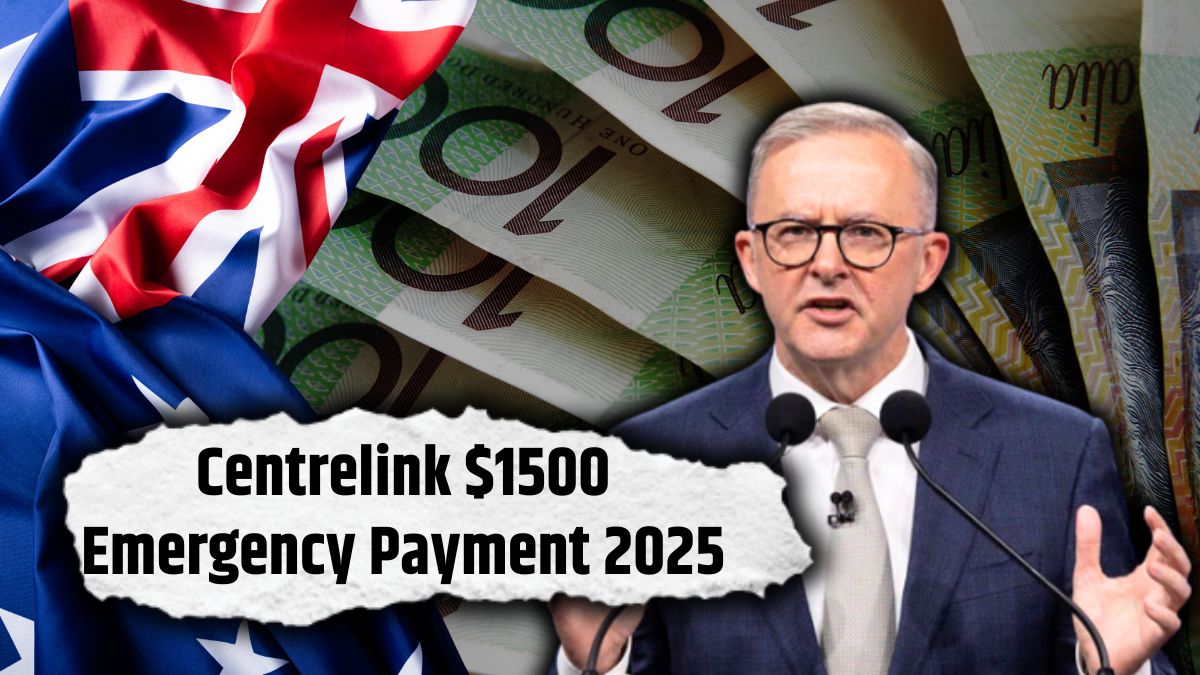In a critical move to protect and empower victims of domestic violence, Centrelink will continue its $1,500 emergency payment initiative in 2025, as part of the Escaping Family Violence Payment (EVP) program. This payment forms the cash component of a $5,000 support package, which also includes goods and services worth up to $3,500, tailored to help survivors leave unsafe environments and begin rebuilding their lives.
These payments are part of the government’s larger effort, originally launched under the 2022–2023 Federal Budget, to combat domestic violence and remove financial barriers that prevent many victims from seeking safety.
Why the $1,500 Centrelink Payment Matters
The $1,500 Centrelink payment plays a pivotal role in the broader Escaping Family Violence Program, designed to provide urgent financial support to victims fleeing dangerous domestic situations. The funding helps cover immediate costs such as temporary accommodation, transport, food, and basic personal needs.
This initiative is more than a financial transfer—it’s a lifeline for individuals at a critical turning point. By offering direct and fast access to funds, the government aims to ensure that safety and independence are within reach for those escaping abuse.
The Structure of the Escaping Family Violence Payment (EVP)
The full EVP support package includes:
- $1,500 in direct cash assistance, paid one time to eligible recipients
- Up to $3,500 worth of goods and services, including:
- Essential household items
- Assistance with relocation expenses, such as removalist services
- Rental bonds or temporary housing costs
- Support for setting up a safe new home
This comprehensive package recognizes that escaping domestic violence involves not just leaving—but starting over—and seeks to address the multiple layers of need survivors face.
Major Reforms to Speed Up Access to Emergency Payments
Previously, survivors were subject to long delays, with average processing times of 33 business days. This unacceptable wait sparked criticism from Social Services Minister Amanda Rishworth, who emphasized the urgency of providing fast-track assistance to those in crisis.
As part of the 2025 reforms, new process improvements have been implemented to reduce wait times significantly, ensuring victims receive the emergency funding and services they need without unnecessary delay.
Startling Statistics Behind the Program’s Expansion
Government data has shed light on the alarming rates of domestic violence in Australia:
- One in four women and one in eight men have experienced intimate partner or family violence by the age of 15
- On average, one woman is killed every 14 days in Australia by a current or former partner
These statistics highlight the urgent need for practical, financial, and emotional support for individuals trying to escape these situations. The government has extended the EVP program through 2025 and allocated an additional $38.2 million to help reach more survivors across the country.
Eligibility Criteria for the $1,500 Centrelink Payment
To qualify for the $1,500 payment and associated EVP support, individuals must meet certain eligibility requirements. You may qualify if:
- You are experiencing or have recently fled domestic or family violence
- The abuse may be physical, verbal, emotional, sexual, spiritual, psychological, or financial
- You are facing threats, coercion, stalking, or attempts to control/dominate from a partner or family member
- You are an Australian citizen, permanent resident, or hold a valid visa that allows access to social support
Proof of risk or abuse, such as a police report, referral from a domestic violence service provider, or court order, may be required to access full support.
What Support Is Included in the 2025 EVP Package?
The 2025 Escaping Family Violence Payment covers more than just financial aid. Survivors will also receive:
1. Direct Financial Assistance
- $1,500 cash payment
- Can be used for transportation, groceries, urgent bills, or other immediate expenses
- In some cases, part of the funds may be provided in voucher form for essential goods
2. Goods and Services
- Help with relocation logistics (e.g., removalists)
- Payment of rental bonds or short-term housing
- Basic furniture or homeware for a fresh start
3. Wrap-Around Case Support
- Dedicated case workers to guide the individual through services
- Help with legal documents, children’s schooling, and mental health support
- A trauma-informed approach to long-term recovery
This comprehensive, wrap-around support model ensures victims are not left to manage their situation alone.
How to Apply for the Centrelink $1,500 Payment in 2025
Accessing support through the Escaping Family Violence Program is straightforward. Here’s how to begin the process:
- Reach out to an EVP provider or visit the Services Australia website
- Download the fact sheet for full eligibility and documentation guidelines
- Submit an online application or get referred through a domestic violence support service
- If eligible, Centrelink will process your application and disburse funds as quickly as possible
Most applicants are guided through the process by a domestic violence service provider, ensuring their privacy, safety, and needs are prioritized.
Will the $1,500 Payment Be Available in 2025?
Yes, the government has confirmed the continuation of the $1,500 Centrelink payment as part of the expanded EVP program for 2025. The additional funding and extended timeline mean that more people than ever will be able to access support.
If you or someone you know may be in danger, reaching out early can make a difference. These payments are designed to offer swift relief, ensuring finances don’t become a barrier to safety and freedom.
What to Do If You or Someone You Know Needs Help
If you believe you or someone close is in danger, take the following steps:
- Contact 1800 RESPECT (1800 737 732) – a 24/7 national sexual assault and domestic violence counseling service
- Visit servicesaustralia.gov.au to learn more about the Escaping Family Violence Payment
- Approach a local domestic violence support service for guidance, advocacy, and referrals
Always prioritize safety first—assistance is available, and you are not alone.







